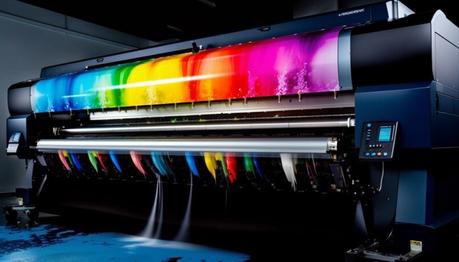
Inkjet printers have revolutionized the printing landscape, becoming indispensable fixtures in modern settings. Their prowess in delivering exceptional print quality has solidified their presence in diverse environments, from households to professional spaces and creative studios. However, comprehending not just their superior print output but also delving into the intricate workings behind their functionality, their distinct advantages, and the nuances affecting their speed can unlock a deeper appreciation for their versatility and potential. Exploring these facets not only enhances our understanding but also empowers users to optimize these printers effectively, extracting maximum value from their capabilities in various printing scenarios.
How Inkjet Printers Work
Inkjet printers operate through a precise and intricate process. A print head, the core component, expels minuscule droplets of ink onto paper, following instructions from the digital file being printed. These droplets combine in CMYK configurations to create a spectrum of colors, while the paper-feeding mechanism ensures steady movement through the printer.
Does an Inkjet Printer Need Ink?
Inkjet printers require ink to function and produce prints. Ink is the essential material used to create images and text on paper. These printers use liquid ink stored in cartridges, typically containing colors like cyan, magenta, yellow, and black (CMYK). The printer's print head ejects precise droplets of this ink onto the paper, forming the desired patterns or text. Without ink, an inkjet printer cannot produce any prints, emphasizing the vital role of ink as the primary medium for image and text creation in this type of printer.
Factors Affecting Inkjet Printer Speed
Several key elements influence the speed of inkjet printers, determining the efficiency of printing tasks. Understanding these factors helps optimize printing processes for improved productivity and output quality.
- Print Resolution: Higher resolutions demand more ink and precision, slowing down the printing process compared to standard or draft modes.
- Complexity of Images or Documents: Intricate graphics or high-density images take longer to print due to the increased amount of detail.
- Printing Mode and Quality Settings: Choosing higher quality settings significantly impacts speed. Draft modes are faster but sacrifice print quality.
- Connection and Data Transfer Speed: Printing through wireless or network connections might introduce delays due to data transfer speeds.
- Printer Hardware Specifications: The processor and memory of the printer play a role in processing print jobs. Faster processors and ample memory can expedite printing.

Uses of Inkjet Printer
Inkjet printing finds extensive application across various domains due to its versatility. It's commonly employed for producing high-quality photos, graphics, and text documents at home, in offices, and within professional settings. The technology's adaptability to diverse paper types allows for the creation of vibrant marketing materials, presentations, and promotional items. Moreover, inkjet printers play a pivotal role in crafting specialty items like personalized greeting cards, stickers, and textile prints, catering to creative and customized printing needs.
Ideal Paper Choices for Inkjet Printers
Inkjet printers perform best when paired with non-porous paper to prevent issues like ink bleeding and smudging, particularly by avoiding fiber-rich bond paper. Specifically designed photo paper is essential for achieving optimal results in inkjet photo printing. Paper intended for inkjet use, typically heavier at 24 pounds compared to the 20-pound paper used in laser printers, offers higher brilliance and brightness, albeit at a slightly higher cost. These distinct qualities ensure superior print quality by reducing ink bleeding along fibers and enhancing the vibrancy of prints.
Conclusion
Inkjet printers have become integral in various settings due to their exceptional print quality and versatility. Understanding their functionality, dependence on ink, speed influencing factors, and ideal paper choices highlights their complexity and importance in modern printing. These printers offer high-quality outputs for photos, documents, and specialized prints, proving efficient, cost-effective, and environmentally friendly for moderate printing volumes. The choice of paper, optimized for inkjet use, significantly enhances print quality and prevents issues like ink bleeding or smudging.
In conclusion, inkjet printers continue to evolve, meeting diverse printing needs with their adaptability and efficiency. Their role in delivering superior prints while being eco-conscious and versatile makes them a cornerstone in the printing landscape, essential for both personal and professional endeavors.

